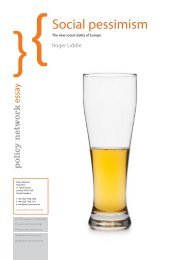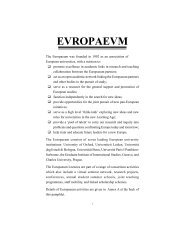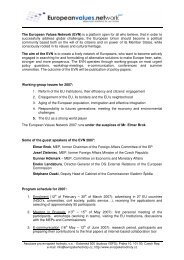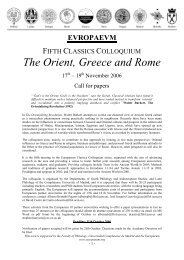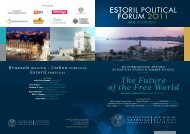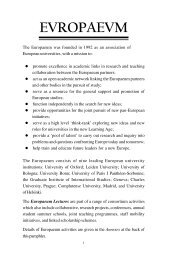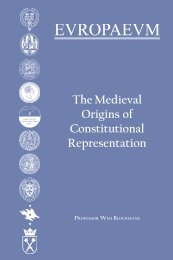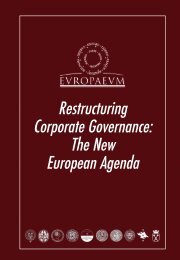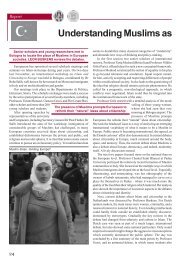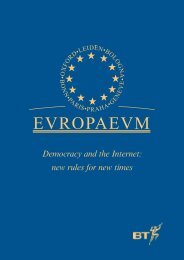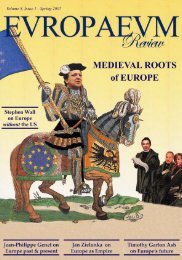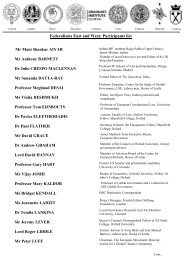Authors Iain Begg | Gabriel Glöckler | Anke Hassel ... - The Europaeum
Authors Iain Begg | Gabriel Glöckler | Anke Hassel ... - The Europaeum
Authors Iain Begg | Gabriel Glöckler | Anke Hassel ... - The Europaeum
Create successful ePaper yourself
Turn your PDF publications into a flip-book with our unique Google optimized e-Paper software.
Putting a European “stamp” on the<br />
new global financial architecture<br />
Fourth, the current global reform agenda to reshape the regulatory<br />
architecture of the world economy can only be effectively influenced by<br />
the Europeans if they speak with a stronger voice, that is, with a single<br />
voice. At a moment when the institutions of global economic governance<br />
are being redesigned to take into account the rebalancing of the world<br />
economy in favour of emerging markets, a cacophony from the European<br />
side in discussions would condemn the EU to a spectator role that is not<br />
commensurate with its economic weight, its political clout and the intrinsic<br />
interests not just of the EU as a political entity, but of each of the Member<br />
States individually. <strong>The</strong> G20 process launched by the Washington Summit<br />
in November 2008 laid out a broad reform agenda, EU countries – and<br />
particularly the euro area countries – now need to agree on a common<br />
position to make sure this G20 negotiations stay on track and progress in<br />
line with their preferences.<br />
“More Europe” is here to stay<br />
It is apparent that “more Europe” is the likely answer to the current<br />
economic and financial crisis. And this answer can be expected to involve<br />
– and indeed necessitate – structural institutional change. Of course,<br />
whether or not the new quality of integration outcomes in Europe will<br />
have a distinctly intergovernmental feel to it – i.e. a continuous and<br />
dominant involvement of national authorities – or increasingly follow, in<br />
the long run, the supranational route – with stronger central institutions<br />
and majoritarian decision-making, remains to be seen. On this, the jury<br />
is out. But whatever the outcome, the future is “more Europe”, not “less<br />
Europe”.<br />
Chapter 3 – <strong>Gabriel</strong> Glöckler 61



